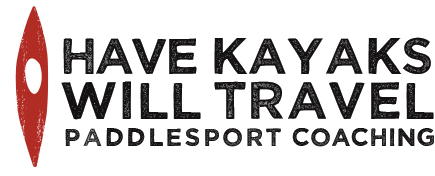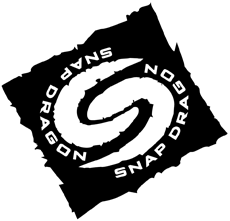Medieval torture? No, just some wrist gaskets being glued into place. OK, we’ve heard from enough people that we feel guilty. Yes, we’ve been too busy to blog lately. Yes, we’ve been on the water. Tomorrow for sure….we...
A mass demotion
There are no PFDs here.* Yesterday we called an emergency meeting of all our paddling gear, poured a few drinks, and broke the news as gently as we could. All the PFDs are now lifejackets**, we explained. We’re sorry, but this wasn’t our decision, we told them. We’re only following orders.The MsFits took it well. One of the Lotuses shed a few tears. The Locean asked for another shot. * with apologies to Alex Kotlowitz.** see the italicized portion at the end of the previous...
Teach early and often
After several days of paddling for fun — something that goes by the term “personal paddling” in our kayak logs — we were scheduled to teach a Level 2 class yesterday at Geneva Kayak Center. The class began at 9 a.m. at the Big Rock Quarry in Sugar Grove, but we had to leave our house pretty early to drive to Geneva; hitch up the trailer; load the spray skirts, life jackets*, paddles, pumps and paddle floats; stop for more coffee; and get to the quarry before the students arrived. Time to get on the road. That’s a.m., not p.m. On the drive out, we reviewed our lesson plan, making a few modifications based on new ideas we’d been thinking and talking about. We wrote an outline on an index card and put it in a zip-lock baggie because we were too sleepy to keep more than one idea in our heads at a time, and right then, that idea was the need to drink more coffee. Boats and gear are loaded up, and we’re ready to head for the quarry. Shortly after we arrived at the quarry, our students began showing up. They were excited, and their mood was infectious. Before long, the five-hour night was forgotten and time began to fly. This is what makes it all worthwhile. Six hours evaporated. We aren’t even sure where they went. We worked on wet exits, strokes and rescues. We talked about safety and local paddling opportunities. And in the process, a group of strangers began to feel like a group of friends, and a group of beginners gained considerable skills. At the end, it was hard to say “good-bye,” and many of them lingered, helping us strap down the boats and chatting.Teaching is rewarding on many levels. Students force you to think about why and how you do the things that you do without thinking. They require you to figure out how they learn so you can effectively teach them. They remind you how far you’ve come as a paddler. And they reinforce your conviction that kayaking is a blast. * Yes, we know. We wanted to write “PFDs,” but we just got the following note from the American Canoe Association: “USCG says ‘Lifejackets’“It has been clarified by the USCG that the use of the term lifejackets is back and should be used when discussing the essential piece of equipment all paddlers should have and should wear.“The only time the term / acronym PFD is being used is when discussing the types of lifejackets and/or regulation issues.“It will be a challenge for many of use [sic] to change the terminology that we use, but to keep with the winds...
Crosstraining redefined
The BCU (British Canoe Union) recently revised its requirements for certified coaches, requiring more interdisciplinary skills. It’s no longer sufficient to be able to teach one type of paddlesport; coaches are now expected to be able to teach students to paddle a variety of boat types.We’ve begun an interdisciplinary approach of our own, too, though mostly in jest. Stand-up paddling. Harder than it looks! Skin-on-frame boat with Euro paddle. Sillier than it...
Ready, set, surf!
Yesterday, Hannah, Alec & Sharon took Clare (8) and her mom, Karin, to 63rd Street Beach. Ready. Set....
Where’s Waldo?
Somewhere on the road between Grand Marais and Chicago. Who knew?
ironies of paddling, part three
Paddling along Pictured Rocks National Lakeshore. When students sign up for day trips during a kayak symposium, they typically are given a choice of beginner or intermediate trips. Those who plan and lead the trips take a few things into consideration in determining the skill level of a trip: distance, length and number of crossings*, and overall potential for conditions**.Students who sign up for trips are supposed to take only one thing into consideration: their own paddling proficiency.But how are they supposed to know whether they are beginner or intermediate paddlers? Those are vast and highly subjective categories. Is a beginner a complete novice? Someone who has paddled only occasionally? Someone who can’t break three knots without a tail wind? Someone who hasn’t paddled that distance before? Or someone who’s just terribly insecure or paddles with too many people with greater skills and experience?I (Sharon) regarded myself as a beginner well into my third year of kayaking. Yeah, I had a reliable roll and could paddle pretty hard and pretty far, but I was paddling with some fairly spectacular kayakers, like Bonnie Perry and Andrea Knepper (and Alec, who is slightly embarrassed that I’ve mentioned him here), and by comparison I felt like a novice.A few days ago, I helped lead a 12-mile trip along Pictured Rocks National Lakeshore. It was billed as an intermediate trip, and 17 students signed up. By the standards I set for myself, none of them were true intermediates, and the trip was challenging and exhausting for many of them. But they all made it and they all had a good time. This trip was a serious stretch for many of them, but by taking it on, they improved their skills and their confidence.So were they intermediate paddlers after all? Probably not, and they certainly had no business attempting that trip on their own. But with five instructors to guide them and handle the issues that arose (which included issuing a “securite”*** to motor boats we couldn’t see through the fog, executing a rescue close to the cliffs, and towing one paddler for five miles), they were intermediate enough for this trip.In any case, I’m glad they didn’t ask me before signing up. So here’s the irony: Even though they had less experience and training than me, they improved my understanding of what a beginner or intermediate trip truly is. * crossings are non-coastal portions of trips when paddlers are more exposed and less able to take refuge at shore.** conditions refers to wind, waves, fog and weather.*** “securite” is a notice to mariners over channel 16 (the emergency...
The power of symposia
Between Memorial Day and Labor Day, the midwest supports eight kayak symposia, from the old (Great Lakes Sea Kayak Symposium) to the new (Windy City Symposium), from the family-oriented (West Michigan Coastal Kayakers Association) to the all-female (Ladies of the Lake). Some are traditional (Greenland Symposium and QUJAQ Training Camp). Most are “bicultural” (Door County Sea Kayak Symposium, Inland Sea Symposium). But all have some key attractions in common: They offer an opportunity for students to take a wide range of classes from numerous instructors in a concentrated period of time; they enable vendors to demonstrate and explain their gear to potential buyers, and potential buyers to test paddle a variety of kayaks; they provide beginner and intermediate paddlers with access to top-notch coaches from around the country and the world; they feature presentations by world-class kayakers who’ve completed expeditions the rest of us can only dream about; and they enable a gypsy group of local kayak instructors to reconnect several times during the summer months. The rodeo at the Western Michigan Coastal Kayakers Symposium, where students and instructors apply their paddling skills to absurd challenges. Many symposia include trips. Here, students and instructors paddle through the Apostle Island sea caves during the Inland Sea Kayak Symposium. Doug Van Doren checks out a waterfall along Pictured Rocks National Lakeshore during the Great Lakes Sea Kayak Symposium. Most of us who teach at these symposia do so as volunteers. We provide all our own gear, pay for our own transportation, and donate our time. Students are sometimes baffled by this generosity.In fact, it’s really not so hard to understand what motivates us: a desire to offer newer kayakers what was once offered to us, a dedication to sharing our enthusiasm and knowledge about a sport we love, and the pleasure of hanging out with other people who feel the same way.In the five short years that we’ve been paddling, we’ve grown very fond of our fellow midwestern instructors. We are a family of sorts, full of larger-than-life characters, crazy stories, mischief and compassion. We strip in parking lots, debate the stink-resistance of various types of clothing, eat one another’s food and watch out for one another. If that’s not family, what is?Students pick up on this camaraderie. We still recall our first symposium, where we were impressed by how much fun our instructors were having and how much they enjoyed one another’s company. Thanks in part to them, we became skilled enough to offer the same inspiration and instruction to the next cohort of paddlers.Symposia aren’t a substitute for taking full classes at a reputable kayak center. They’re more like a tasting menu, while full-length classes are a multi-course meal....
Local paddler profiles, part two
Sharon with Lyn on a Chicago beach. Every community has its unsung heroes—people who make a difference without fanfare. The kayaking world is full of such people. Often they’re instructors who patiently teach a wide range of students, making them better and safer paddlers. In the coming months, we plan to profile some of these people, with a focus on ones in the midwest. Lyn helps a novice paddler get settled in his boat at the Great Lakes Sea Kayak Symposium. Lyn Stone is our first victim in this endeavor. Sharon first met Lyn in 2006 at Ladies of the Lake, a kayaking symposium in Michigan’s Upper Peninsula. (It moves around. This year, it will be held on Drummond Island from August 21 to 24. Get the details at Down Wind Sports.) The meeting was classic Lyn (and Sharon, for that matter). Sharon showed up for a BCU three-star training without her spray skirt, which was hanging back in the campsite several miles from the put-in. Lyn, true to form, had a spare and offered it to Sharon.We later learned that Lyn has a spare or a repair for practically every essential piece of gear. She’s has a remarkable depth of knowledge about kayaking, but she shares it selectively, not boastfully, when it’s requested or needed. And she’s bicultural, in the paddling sense of that term; she prefers a Greenland stick but teaches mainly with a Euro paddle.Alec first met Lyn at a Geneva Kayak Center staff training the following year, where he was impressed by her down-to-Earth attitude. But best of all, she’s always willing to help out, whether a friend needs new deck rigging or a student needs coaching.Lyn is part of our instructor cohort. She and Sharon were certified together by Sam Crowley in September, and the three of us have trained and taught together since then. We rely on one another as we refine our ideas, reflect on our experiences, and grow as paddlers and instructors.After we returned from Michigan’s east coast, we spent one day paddling our home waters with Lyn. We put in at the 59th Street harbor and paddled past the fishermen and docked motorboats and out onto the lake. We retrieved balls and balloons that children had lost while playing at the 63rd street beach, and took at detour into the 57th Street harbor to visit Maynard Welch, the retired harbormaster who continues to best represent the spirit of that lovely harbor. (For a profile of Maynard, check out the Nov. 22, 2005 issue of the Chicago Tribune.) Then we paddled down past The Point, where we held our engagement party 20 years ago. The water was a little bumpy, with...
Another must-stop
The scene outside Sherman’s Dairy Bar on a warm Friday afternoon. Add this to the list of places you must stop on your way home from Michigan.Sherman Dairy Bar, an unprepossessing creamery and ice cream parlor on Phoenix Road in South Haven, has been serving up huge scoops for 50 years. On a hot weekend afternoon, you might have to stand in line for 10 or so minutes, but it’s well worth the wait. You can choose between about 50 flavors, from chocolate and vanilla to cappuccino and coconut almond fudge, all made with real ingredients and no artificial flavorings. It’s anything but low-fat, and it’s utterly...







